63% of businesses currently win less than half of the proposals they submit. Meanwhile, just 15% are winning new business from at least 70% of their proposals. The moral of this story? It’s time to improve the way you write your business proposals.
In this article, we're sharing a 7-step guide to help you create better business proposals. We’ve also included a template you can use as a framework to improve the way you write a business proposal.
What's the big deal with business proposals?
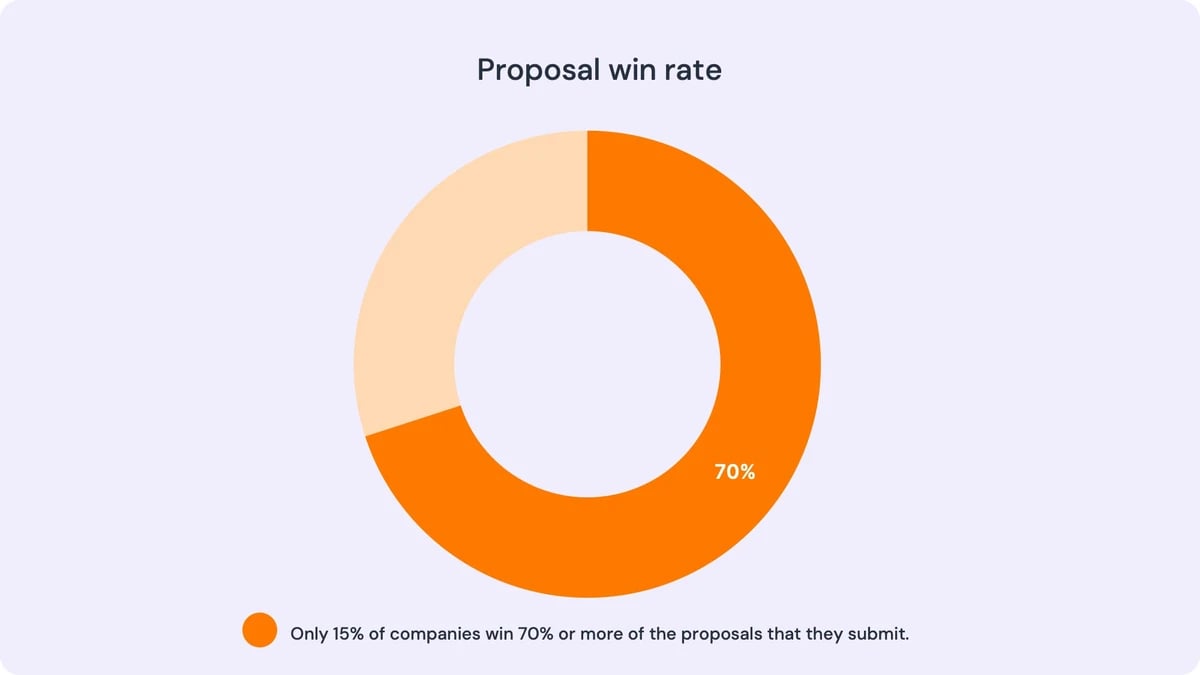
For most B2B companies, proposals are an essential part of doing business. And if your win rate is lower than you’d like, it’s time to start thinking about how your proposals could be contributing to that.
It doesn’t matter if it's an RFP, short-form, or even an unsolicited proposal – a business proposal will feature many of the same elements.
This is because, when done right, business proposals can overcome objections from the most diligent prospects.
The trouble is it can be difficult to know how to turn an average proposal into a winning proposal that puts you in the top 15%.
Common issues most businesses face with writing proposals include;
- The time it takes to create a proposal from scratch
- Keeping each proposal consistent with company branding
- Making sure they feature the latest product and pricing details
So it’s clear that there has to be a better way.
7 Steps to writing better business proposals
Business proposals outline your solution to a prospective client’s problem and are designed to give them confidence that you’re the right vendor to work with.
Typically, proposal documents will include details on pricing, deliverables, and milestones, as well as details on your company.
To be more specific, there are 8 questions a potential client is looking to answer when they read your proposal:
- Who are you, and what makes you qualified to help them?
- Do you understand the prospect’s pain points and challenges?
- How do you plan to solve these problems?
- How long will your solution take to implement?
- How much will you charge?
- What is the return on investment of your product or service?
- Who will be working on delivering your solution?
- Have you helped other companies like them solve similar problems?
This 7-step guide (and proposal template) will help you answer all these questions.
However, before you can begin to write a business proposal, you’ll need to start with research.
1. Preparation is key
There are 3 key areas you should focus on before you start writing your proposal.
Discovery and problem statement
As part of your sales process, your team should be undertaking discovery to clarify the problems your prospect is looking to solve and the challenges they’re currently facing.
A good discovery process will also quantify what solving these issues could mean for your prospect. This will help you to understand the return on investment of your solution.
Company research
As well as the details gathered during discovery, you should also take the time to understand your prospect’s company in more detail.
This background research includes firmographic data such as company size and revenue, as well as environmental factors such as operating conditions and industry regulation.
Uncovering these insights is critical to ensuring that your proposal is an appropriate size and scale for your prospect and you can tailor it to their specific needs.
Template
To make sure the information in your business proposal is consistent and accurately reflects your company’s brand, you should consider preparing a template in advance.
Now that the research step is complete, you’re ready to start writing your most effective business proposal yet.
|
Tips! GetAccept includes a library of mobile-ready proposal templates to help you with this, or you can build your own from scratch.
We also have a free-to-use library of proposal templates configured for specific use cases like business proposals, budget proposals, digital marketing proposals, and much more. |
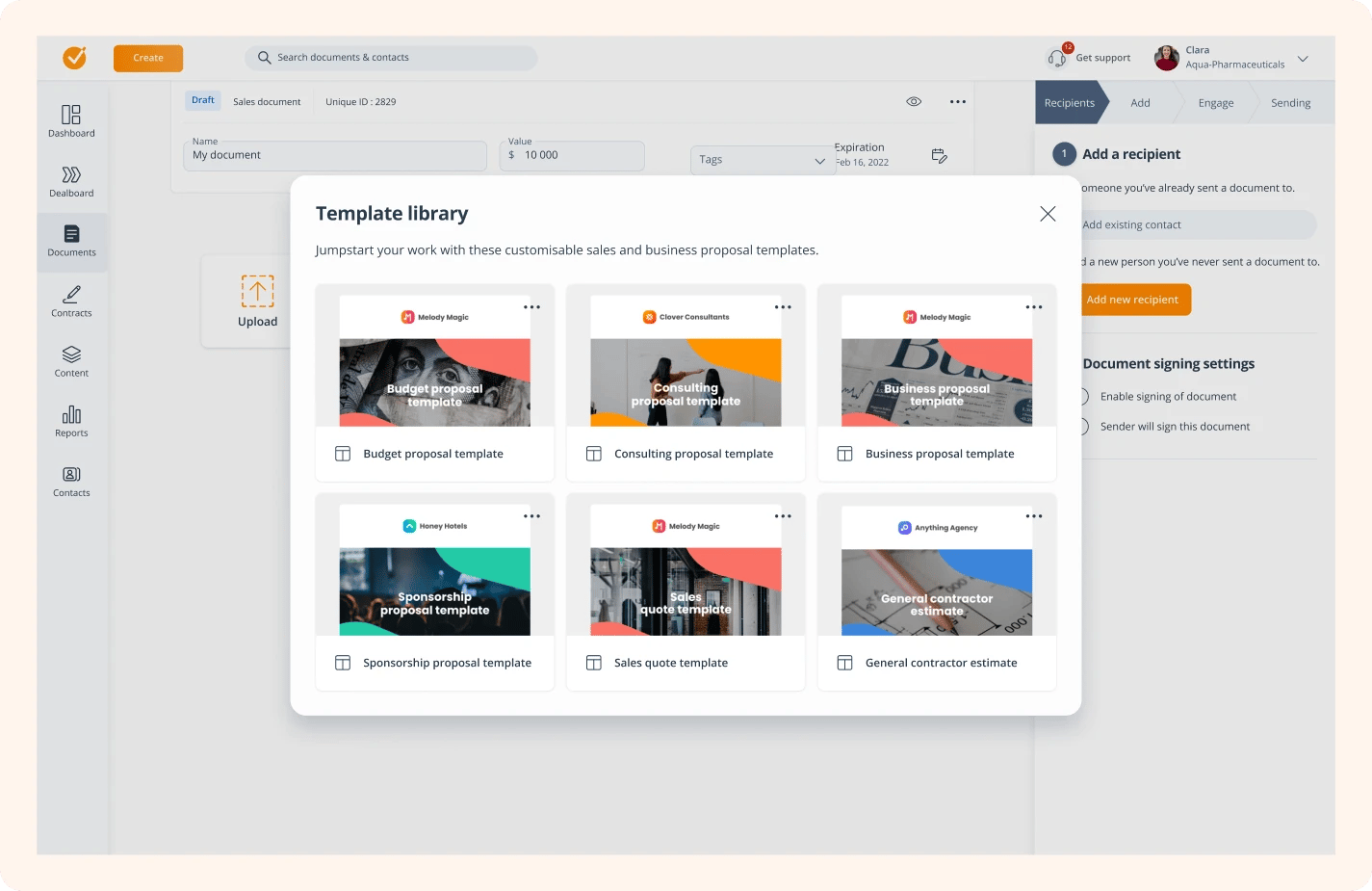
2. First impressions matter
You don't get a second chance to make a good first impression.
So while it's easy to jump straight into the price and delivery, it's a good idea to take a moment to start how you mean to go on.
And one of the best things you can do to have a positive impact on your prospect is to include a well-designed cover page in your proposal.
It may seem like a small detail, but proposals featuring an attractive front cover page are proven to convert 45% better than those that don’t.
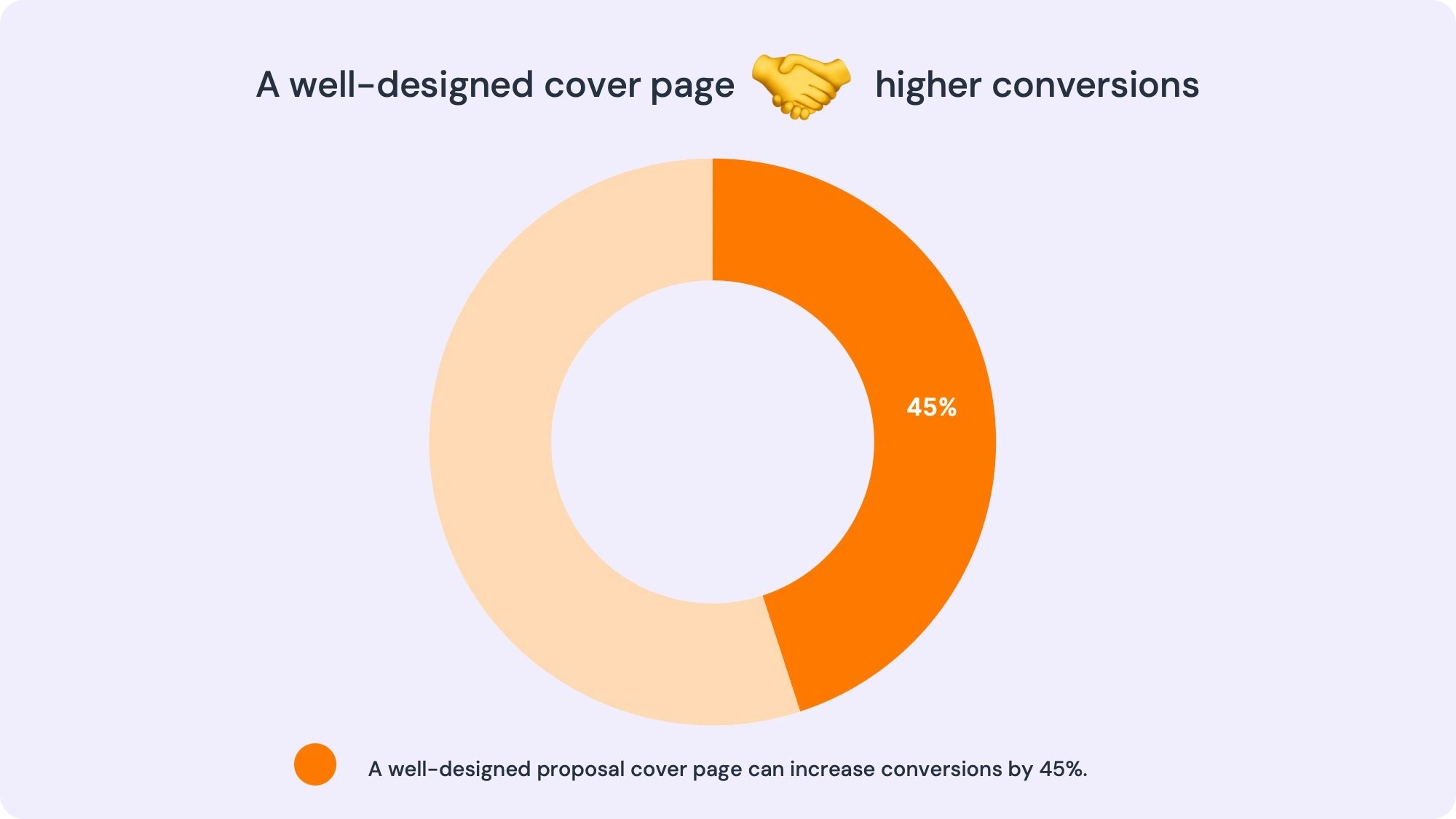
Next, you should include an executive summary and/or introduction that allows you to quickly demonstrate how well you know the prospect and their pain points.
Using a template is a great way to produce proposals efficiently, but you should always personalize the content to make sure it doesn’t sound generic or ‘boilerplate’. No prospect wants to feel like they’re reading a one-size-fits-all proposal.
Another way to make a great first impression?
Use video.
Using video in your proposals has a huge impact on close rates. In fact, they helped one sales rep increase his close ratio to 91%.
With GetAccept, all customers have access to the video functionality, which lets you quickly add a personalized video to your proposal and stand out from the competition.
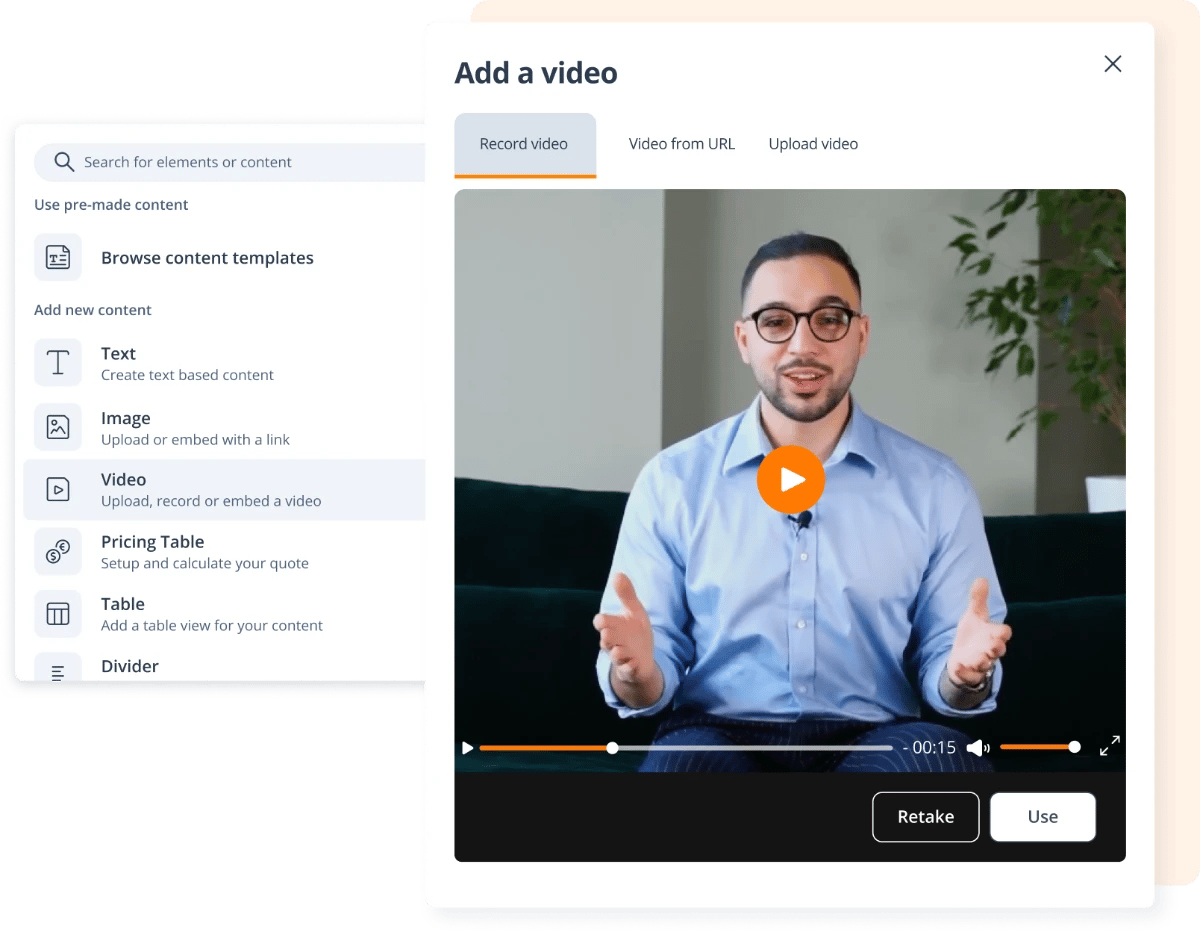
One more recommendation:
Add a ‘contents’ page to ensure the content is easy to navigate.
In parallel to this, you should ensure that the document’s length reflects the size of the opportunity.
A prospect involved in a multi-million dollar deal will expect a long and detailed proposal, but this same approach would be overwhelming for a much smaller business.
3. Your proposed solution
Let’s be clear:
You need to offer compelling insight into who you are and why they should trust you as a vendor – because 90% of people only buy from companies they trust.
You can convey this through trust signals such as how long your company has been trading, names of flagship customers, metrics that indicate previous success, and any certifications, affiliations, or awards relevant to your sector.
|
|
|
Next, you need to focus on the prospect and their problem, ensuring that you thoroughly understand exactly what it is they’re looking to achieve.
To make sure your messaging here really resonates, try to include some of the specific language they shared during discovery.
By this point, the prospect will be eager to understand exactly how you’ll solve their problems.
Take the time to outline your solution in as much detail as necessary, answering any specific questions that may have come up during discovery.
Alongside this, you should include an itemized list of deliverables and details of the associated milestones or timeframes for each item. This will help all stakeholders to see exactly what is happening and when.
Now that the prospect trusts you and you can deliver on what you’re proposing, they’ll be ready to learn more about how much it will cost.
4. Pricing & ROI
The next part of your proposal should outline how much the prospect needs to invest in choosing your solution.
The key word here is invest.
You should present the pricing as an opportunity rather than a cost.
One of the cleanest ways to present this information is with itemized pricing. This gives prospects a clear picture of precisely what is going into the total price for this project.
GetAccept includes CPQ functionality that helps you and your sales team easily include accurate pricing tables directly into your proposals.
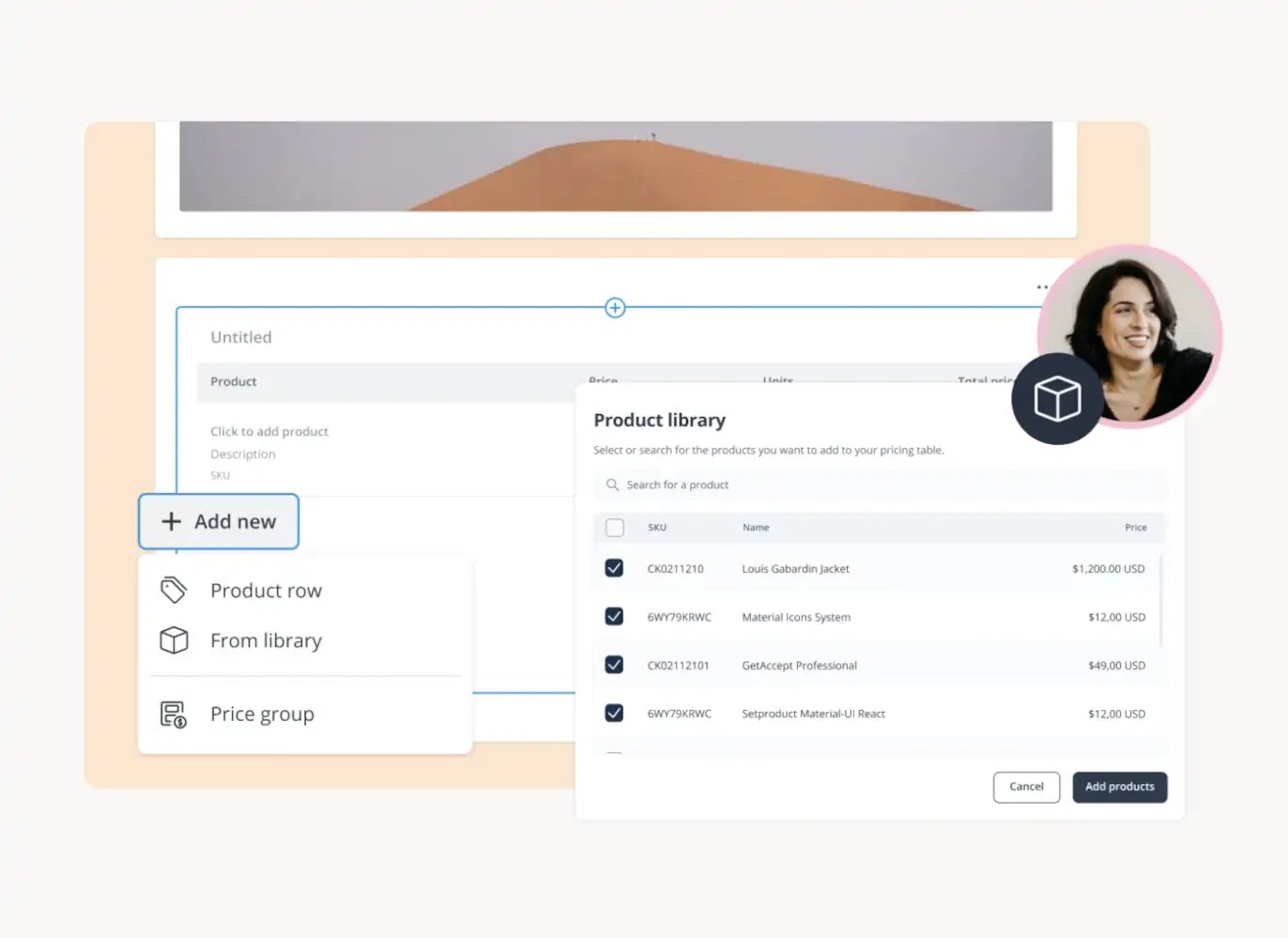
Depending on how your discovery and company research went, you can also discuss the return on investment your prospects may expect from choosing your proposal.
To help convince your prospects of the value of your proposal, the next thing you need to look at is social proof.
5. Social proof is key
According to research by Gartner, 86% of businesses consider verified reviews critical in their purchase decisions.
This evidence underlines the importance of including social proof in your proposal because not only does it increase trust, but it also increases conversions by 34%.
Social proof is a way to showcase the experiences and opinions of other customers quickly and can often indicate the results that your prospect can expect to achieve.
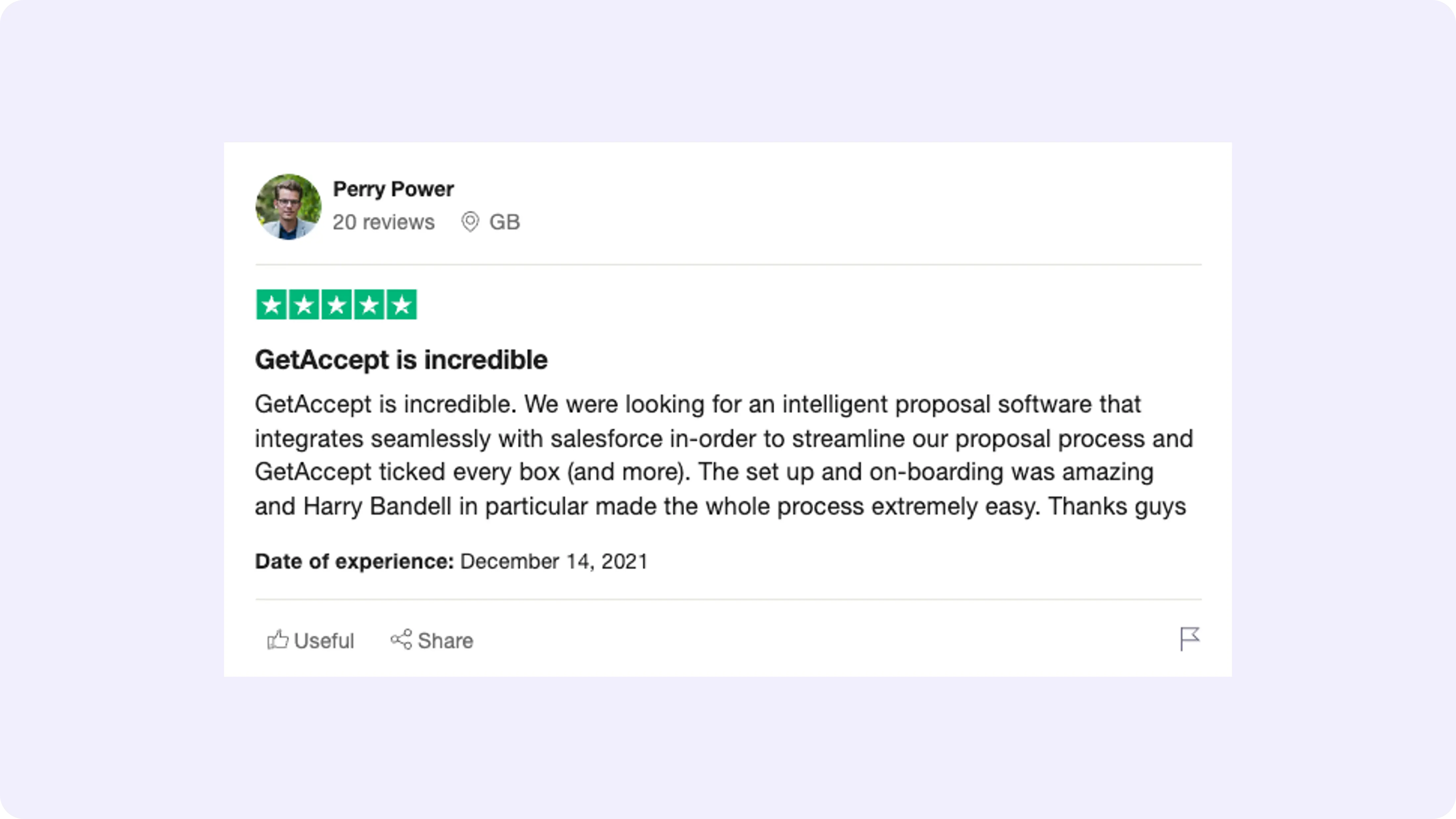
Examples of social proof you could use in your proposal include;
For maximum impact, make sure the social proof you choose is from companies of a similar profile and size to your prospect and is relevant to the problem you’re solving for them.
Depending on the deal's value, you may also wish to invite your prospects to reach out to customers featured in your social proof.
However, you should clear this first with your customers and reward them in some way as part of a customer loyalty program.
By this point, it’s decision time for your prospect.
So let’s look at how you can ensure your proposal has a strong ending.
6. Close your proposal strongly
After outlining the details of your company, your solution, and your pricing, there are 3 key questions to ask yourself:
- Have you covered the 8 key questions your prospect expects to answer?
- Have you included a call to action? The next steps shouldn’t be a guessing game for your prospects!
- Have you put any contract details or T&Cs in your proposal for easy sign-off?
If you can answer ‘yes’ to all 3 of these, you’re ready to head straight to step 7 and finalize your proposal.
7. Edit and polish for consistency
Once you’ve finished writing your proposal, you should take the time to review. First of all, ask yourself:
- Can it be refined?
- Does everything make sense? i.e. Is it super clear and easy to read?
- Can I remove any words to make it even easier to read?
Once you’ve made any edits to refine your proposal, it’s time to proofread it for spelling, punctuation, and grammar.
The final check you should do is for consistency. This is especially important if multiple people have contributed to the document. It helps to iron out differences in writing style, layout, and approach – and ultimately keeps everything ‘on brand’.
Finally, it’s time to send it to your prospect.
Do’s and don’t for writing a business proposal
Along with our 7-step guide on how to write a business proposal, we also wanted to share a few tips based on our experience that you should keep in mind while creating them.
✅ Make sure you cover the 8 key questions prospects want to answer.
✅ Frame the project as an investment, offering a potential ROI where possible.
✅ Include as much relevant social proof as possible to build trust with your prospects.
❌ Don’t just use generic ‘cut and paste’ content – your prospects will know.
❌ Don’t waste time creating huge proposals for tiny deals – be proportionate.
❌ Don’t forget to include a cover page to increase conversions by up to 45%.
Now you’re clear on what you need to do to create a winning business proposal, we’ve prepared a business proposal template to help you fast-track your proposal process.
Business proposal template
To get started on your journey to writing better business proposals, we’ve included a template on which you can base yours.
It’ll help you include all the major parts needed and can be customized to suit your needs.
It’s worth noting, though, that using a template like this is no substitute for using proposal software, especially if you’re submitting more than a few proposals a month.
You can also visit our free-to-use business proposal template library, which includes video, chat, and e-signatures, to help your proposals come to life and close deals faster.
Whether you want to send a business proposal, joint venture proposal, or something else entirely, our free template library has 30+ templates for you to choose from.
In the meantime, you can use the template below to help you write better business proposals.
|
Section title |
Section description
|
| Cover page |
Design an eye-catching and attractive cover page to boost conversions. |
| Contents page |
Cleanly lay out the contents of your proposal so it’s easy to navigate. |
| Executive summary |
Write an ‘at a glance’ summary that gives a casual reader the highlights. |
| Introduction |
Introduce your company and your approach to the prospect’s problems. |
| Project details |
Go into more detail about your approach to meeting your prospect’s needs. |
| Deliverables and milestones |
Outline exactly what you’ll be delivering and the timelines associated with it. |
| Pricing |
Present pricing as an investment, itemize everything, state ROI if possible. |
| Social proof |
Include relevant social proof from similar customers you’ve already helped. |
| Call to action |
Don’t make the prospect guess. Tell them exactly what the next steps are. |
| Contract/T&Cs |
Include a copy of the contract/T&Cs to make sign-off as easy as possible. |
| Appendices |
Any relevant supporting documentation goes here and can be referenced. |
The number of pages needed for your proposal will vary depending on the size of the deal and the complexity of your offering.
However, if you follow the process outlined in this article, you’ll be well on your way towards writing a better business proposal that wins you more business.
Of course, you can produce all of your proposals manually using Microsoft Office and email – but why would you?
There is a better alternative.
Increase win rates with proposal software
Now that we’ve covered creating better proposals, let’s take a look at how proposal software can elevate your output even further.
In a nutshell, proposal software allows you to use templates, automation, integrations, engagement tools, and analytics to radically improve your proposal process.
Managing proposals by email means you lose out on advanced tracking insights that help you understand when a prospect has opened and interacted with your proposal.
At the same time, creating proposals in Word and Excel means you’ll miss out on presenting your clients with polished, professional documents that are on brand and consistent every time.
Proposal software doesn’t have to be expensive, either.
For example, you can start sending proposals from just £13 a month.
Not a bad investment. So, what’s the return?
Well, the average sales rep sends 179 proposals a year using proposal management software versus 145 without.
At a 44% close rate, that’s an extra 17 deals a year you’re missing out on.
(Sign up here and see how quickly you can send out your first proposal).
To conclude
Business proposals are a critical part of winning B2B sales.
However, while most companies are winning less than half of the proposals they submit, only 15% of companies that are winning 70% or more.
There has to be a better way when it comes to writing proposals.
There is. That’s where technology comes in.
GetAccept – a digital sales room (a.k.a. DSR) platform – includes software to help you manage your entire proposal and contract management process, with features like;
- Content library - helping you to create mobile-ready proposals in minutes
- CPQ - enabling you to include accurate quotes and pricing in proposals quickly
- Tracking - easily send proposals directly to prospects and track their interactions
- Real-time editing - update your proposals in seconds based on prospect feedback
- Personalization - include unique videos and messages to boost engagement
- Contract management - sign and manage contracts digitally with ease
Write better business proposals and increase win rates with GetAccept



